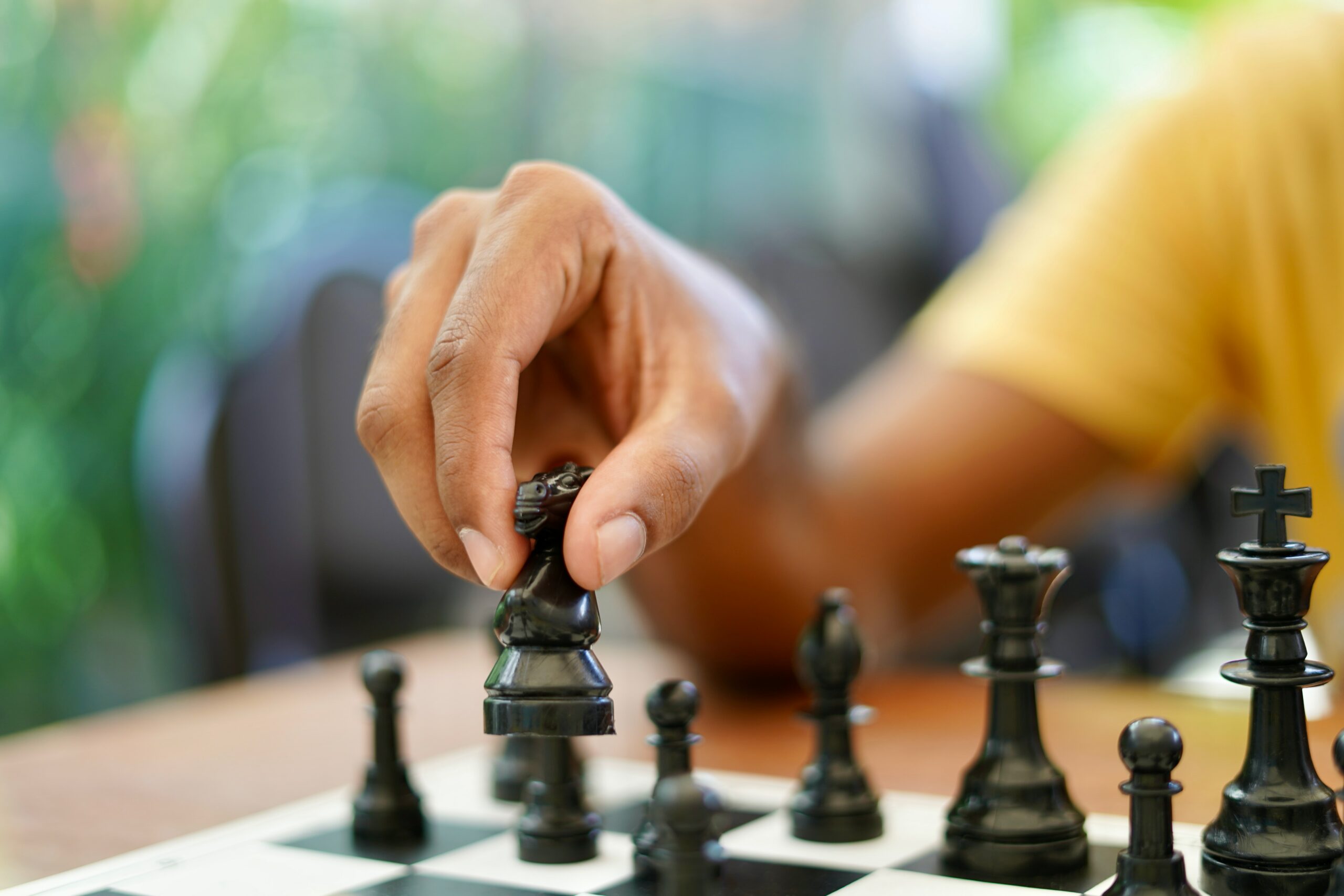Chess is a game that has captured the minds of people for centuries. It’s a strategic battle where players maneuver their pieces across a checkered board, aiming to outwit and outmaneuver their opponent. While defensive play is essential, a well-executed attack can often lead to victory.
In this comprehensive guide, we will delve into the intricacies of chess attacks, exploring the key principles, techniques, and strategies that will help you become a formidable attacker on the chessboard.
How can beginners improve their attacking skills in chess?
Beginners seeking to improve their attacking skills in chess can take several steps to enhance their abilities. Firstly, it is essential to have a solid grasp of the basic rules and principles of chess.
This includes understanding the importance of controlling the center, developing pieces harmoniously, and ensuring the safety of their own king. Additionally, studying classic attacking games played by grandmasters can provide valuable insights and inspiration.
Practicing tactical puzzles and solving chess problems can sharpen calculation skills and pattern recognition, enabling beginners to identify and execute attacking opportunities. Finally, actively analyzing and reflecting on their own games can help beginners identify areas for improvement and learn from their mistakes.
What are the key principles of a successful chess attack?
The key principles of a successful chess attack revolve around piece coordination, exploiting weaknesses, and accurate calculation. Piece coordination involves harmoniously working together, leveraging the combined strength of your pieces to overwhelm your opponent’s defenses.
Exploiting weaknesses in your opponent’s position, such as pawn weaknesses or vulnerable squares, allows you to create strategic advantages and openings for tactical strikes. Accurate calculation is crucial in evaluating the consequences of your moves, foreseeing potential threats, and calculating deep variations.
When is the right time to initiate an attack in a chess game?

In the game of chess, the timing of an attack can often be the deciding factor between success and failure. The right time to initiate an attack depends on several crucial factors.
First and foremost, ensuring the safety of your own king is paramount. It is unwise to launch an attack if your own position is weak and vulnerable to counterplay. Once you have completed your development and secured your king’s safety, you can consider launching an offensive.
Additionally, identifying weaknesses in your opponent’s position, such as undefended pieces or pawn weaknesses, can signal the opportune moment to strike. Patience and careful evaluation of the position are key in determining when to unleash your attack and catch your opponent off guard.
Which pieces are most effective for launching an attack on the opponent’s king?
When it comes to launching a powerful attack on the opponent’s king in chess, certain pieces have proven to be particularly effective. These pieces possess unique characteristics and abilities that allow them to penetrate deep into the opponent’s position and deliver devastating blows.
Here are the key pieces that excel in launching an attack on the opponent’s king:
-
Queen: The queen is the most versatile and powerful attacking piece in chess. With its ability to move in any direction and cover vast distances, the queen can quickly infiltrate the opponent’s position and unleash a barrage of threats.
-
Rook: The rook, with its long-range movement along ranks and files, is a formidable attacking piece. It can often be used to spearhead an attack, targeting vulnerable squares and lines, and coordinating with other pieces for a lethal assault.
-
Bishop: The bishop’s diagonal movement makes it an excellent piece for launching attacks along the diagonals. By controlling key diagonals, bishops can put significant pressure on the opponent’s position, aiming at critical squares and pieces.
-
Knight: Although the knight’s movement may appear less direct, it possesses unique attacking abilities. Knights can leap over other pieces, making them unpredictable and capable of launching surprise attacks from unexpected angles.
Why is controlling the center important for a powerful attack?
Controlling the center is of utmost importance when aiming for a powerful attack in chess. The center of the board holds strategic significance as it offers the most direct and expansive control over the game. Occupying the central squares with your pieces can gain a positional advantage that allows for greater mobility and flexibility.
This advantageous position enables you to launch swift and coordinated attacks on both flanks, keeping your opponent on the defensive. Moreover, controlling the center restricts your opponent’s options, limiting their ability to counterattack effectively.
The center serves as the launching pad for your attacking forces, providing the foundation for a potent and relentless assault on your opponent’s position.
How can you create powerful pawn structures to support your attack?
Pawns are the backbone of any chess position, and their strategic importance should not be underestimated when planning an attack. Creating powerful pawn structures can provide a solid foundation for launching your assault.
Forming pawn chains, such as the pawn duo or the pawn triangle, can strengthen your position and create attacking opportunities. Additionally, advancing pawns to open up lines for your pieces or create weaknesses in the opponent’s position can significantly aid your attack.
What are some common attacking patterns every chess player should know?
Familiarity with common attacking patterns is crucial for any aspiring chess player. These patterns often involve tactical motifs that can lead to winning advantages.
Some essential attacking patterns include forks, where one piece simultaneously attacks two or more opponent pieces, pins, which immobilize a piece to target a more valuable one, and discovered attacks, where a previously blocked piece reveals a powerful attack.
| Attacking Pattern | Application | Example |
|---|---|---|
| Fork | Simultaneously attacking two or more opponent pieces | White’s knight forks the black king and queen, gaining a decisive advantage |
| Pin | Immobilizing an opponent’s piece to target a more valuable one | Black’s rook pins the white queen to the king, limiting its mobility |
| Discovered Attack | Unleashing an attack from a previously blocked piece | White’s bishop moves, revealing a powerful attack from the queen |
| Back Rank Mate | Trapping the opponent’s king against the back rank for a checkmate | Black’s rook delivers checkmate to the white king on the back rank |
| Overloading | Forcing an opponent piece to defend multiple squares or pieces | White’s knight overloads the black queen, forcing it to defend the rook |
How do you deal with opponents who play defensively during your attack?
Encountering opponents who adopt a defensive strategy can pose a challenge during an attack. However, there are effective ways to break through their defenses. One approach is to maintain the initiative and keep the pressure on your opponent.
Continuing to develop your pieces and applying relentless pressure can force your opponent into making concessions or weakening their position. Additionally, strategic pawn breaks or sacrifices can disrupt their defensive setup and open up avenues for your attack.
Why is accurate calculation crucial when executing a chess attack?

Accurate calculation is a pivotal aspect when executing a chess attack as it determines the success or failure of your strategic assault. When launching an attack, every move becomes a calculated risk, and a single miscalculation can lead to a disastrous outcome.
The accurate calculation involves analyzing potential moves and counter-moves, foreseeing tactical opportunities, and calculating deep variations to anticipate your opponent’s responses. It helps you identify the most promising lines of attack, avoid blunders, and uncover hidden possibilities that may lead to a winning advantage.
In the heat of the battle, accurate calculation empowers you to make informed decisions, seize opportunities, and outmaneuver your opponent on the path to victory.
How can you use sacrifices to break through your opponent’s defenses?
Sacrifices are a powerful and dynamic tool in a chess attack. Sacrifices can be tactical, positional, or even psychological in nature.
They can disrupt your opponent’s plans, expose weaknesses in their position, or force their pieces into unfavorable positions. Mastering the art of sacrifice requires a deep understanding of the position and accurate calculation to ensure that the sacrifice leads to a favorable outcome.
What are the best ways to exploit weaknesses in your opponent’s position?
Exploiting weaknesses in your opponent’s position is a crucial aspect of launching a successful attack. Identifying and targeting specific weaknesses, such as pawn weaknesses, backward pawns, or weak squares, can give you a strategic advantage.
Exerting pressure on these weaknesses can force your opponent into making defensive concessions or create opportunities for tactical strikes. Combining such exploitation with accurate calculation and piece coordination can lead to decisive breakthroughs.
How do you transition from a solid position to a dynamic attacking setup?
Transitioning from a solid and harmonious position to a dynamic attacking setup requires careful planning and preparation. It often involves repositioning your pieces, redirecting their focus towards the opponent’s king, and creating tactical threats.
An effective transition requires a fine balance between maintaining the solidity of your position and launching a calculated attack. Timing and accurate evaluation of the position are essential for making this shift successful.
Why is coordination among your pieces vital during an attack?
Coordinated piece play is vital when launching an attack. The synergy between your pieces allows you to maximize their combined strength and overwhelm your opponent’s defenses.
Coordinated attacks involve pieces working together, often targeting the same squares or exploiting common weaknesses. Coordinating your pieces effectively can create powerful threats that force your opponent into difficult defensive choices.
How can you maintain a balance between attacking and defending during the game?
Maintaining a delicate balance between attacking and defending is essential in chess. While launching an attack is exciting and can lead to victory, neglecting defense can leave your own position vulnerable.
Finding the right equilibrium requires assessing the changing dynamics of the game and adapting your strategy accordingly. Knowing when to shift gears between attack and defense, while keeping your king safe, is a skill that separates skilled players from the rest.
What are some classic attacking games from chess grandmasters, and what can we learn from them?

Studying classic attacking games from chess grandmasters is an excellent way to improve your own attacking skills. Analyzing games played by legendary players such as Mikhail Tal, Garry Kasparov, or Bobby Fischer can provide valuable insights into the art of attacking chess.
By observing their tactical brilliance, strategic planning, and intuitive sacrifices, we can learn timeless lessons about piece coordination, exploiting weaknesses, and seizing the initiative.
All in all
Mastering the art of chess attacks requires a combination of strategic understanding, tactical awareness, accurate calculation, and precise execution. By applying the principles and techniques outlined in this comprehensive guide, you can become a formidable attacker on the chessboard.
Embrace the challenge, study the masters, and unleash the power of your pieces to achieve victory in the captivating game of chess.




